How To Kill Invasive Plants In The Garden?trackid=sp-006
10 Invasive Plants You Should Get Out of Your Garden Now
Keep your guard up. Look out for these weedy pests and make sure they don't get a toehold in your yard.
Every editorial product is independently selected, though we may be compensated or receive an affiliate commission if you buy something through our links. Ratings and prices are accurate and items are in stock as of time of publication.
1 / 10
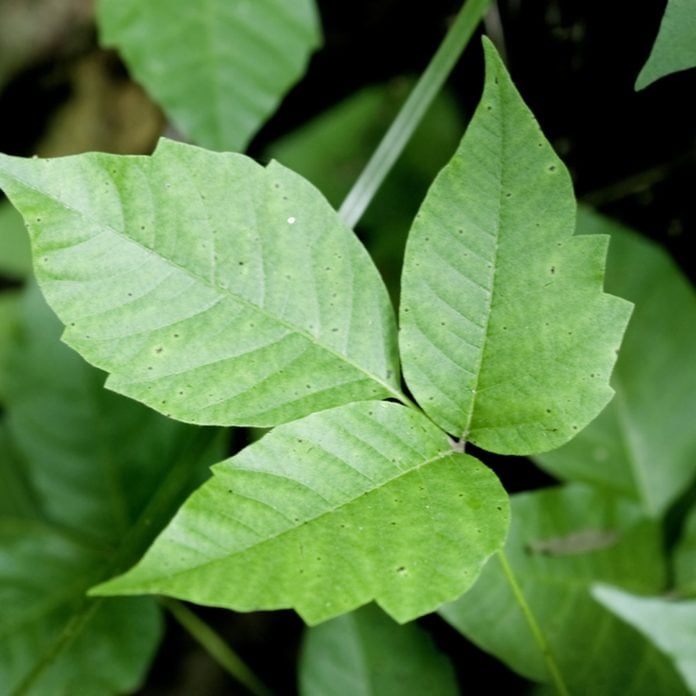 Tim Mainiero/Shutterstock
Tim Mainiero/Shutterstock
Poison Ivy
Leaflets three, let it be. Good advice for the majority of people who are allergic to these invasive plants. Some harmless plants are mistaken for poison ivy — young box elder seedlings, for instance. But you'll know for sure if you develop an itchy rash after coming in contact with the sap, which contains urushiol. Poison ivy (Toxicodendron radicans) and the related poison oak (Toxicodendron diversilobum) spread not only by underground runners but also by seeds dispersed by birds. Treat with an herbicide labeled for poison ivy. Or wear protective clothing and disposable gloves and dig it up by hand, discarding with the trash. See our expert tips for a weed-free yard.
2 / 10
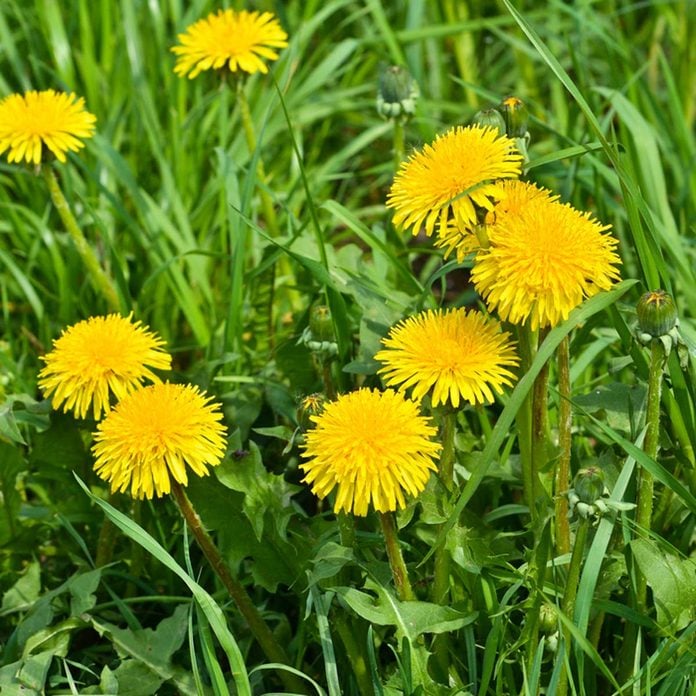 Sergei Drozd/Shutterstock
Sergei Drozd/Shutterstock
Dandelions
Dandelion (Taraxacum officinale) is an ornamental weed. That's right, ornamental. But those golden yellow blooms quickly turn to fluffy seed heads that disperse in the wind (or with the breath of a giddy toddler blowing the seeds into the air). Before you know it, you've got a field of these invasive plants where once grew a promising lawn. It should be noted that young dandelions (on non-treated lawns only, please) are actually a nutritious addition to spring salads, adding a touch of bitterness for more character. You can remove the plants by hand with a forked dandelion weeder or spot spray with a broadleaf herbicide. Learn more about killing weeds.
3 / 10
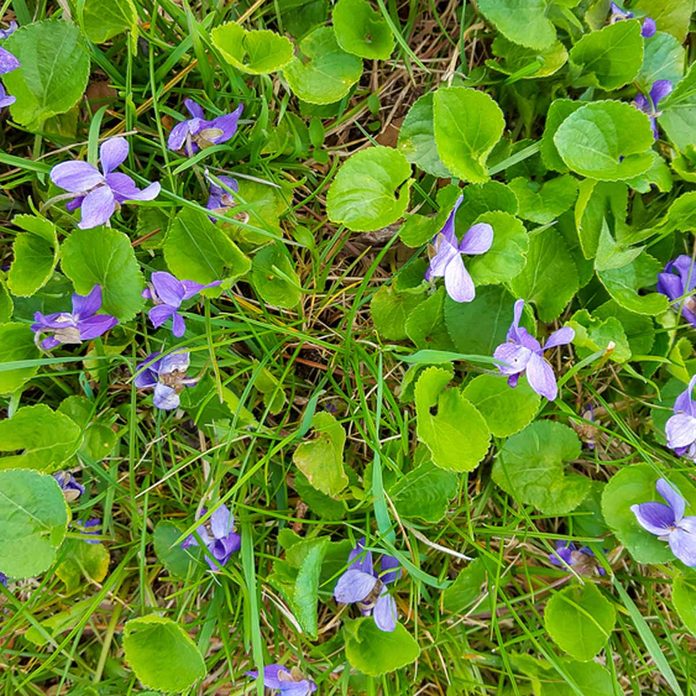 Maria Dryfhout/Shutterstock
Maria Dryfhout/Shutterstock
Violets
Sometimes a "weed" is not necessarily a weed. Such is the case with wild violets (Viola sororia), which are a fine addition to a naturalistic garden. Mass them in woodland and wildflower gardens and enjoy. They even grow contentedly beneath black walnut trees. Although they don't spread by underground root structures, wild violets do freely self-seed to the point of behaving as invasive plants in the lawn. In that case, remove by hand or spot spray with broadleaf herbicide. Learn how to eliminate weeds from your lawn using the best weed killers.
4 / 10
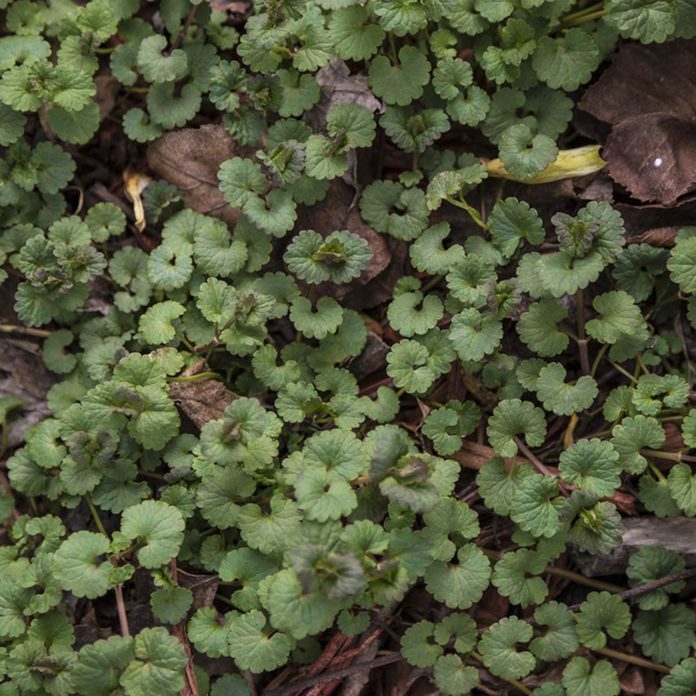 William Hager/Shutterstock
William Hager/Shutterstock
Creeping Charlie
Creeping Charlie (Glechoma hederacea) makes one heckuva groundcover — thick, tough, adaptable to sun or shade, and it even has violet-purple flowers in late spring. Oh, did we mention vigorous? That's the problem, really. Creeping Charlie, also known as ground ivy, runs roughshod through the garden, forming a dense mat and smothering other plants. You can dig it up, but don't try to compost it because the stem fragments can re-root. You can also treat these invasive plants with a broadleaf herbicide, but you may need to make several applications over the course of several weeks. Mulching garden beds is also a good solution. Learn how to use mulch to control weeds.
5 / 10
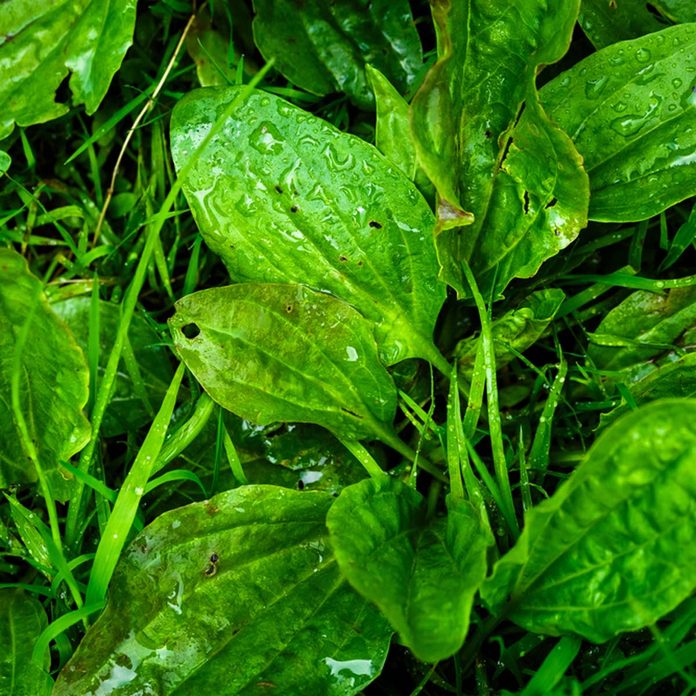 Bystrov/Shutterstock
Bystrov/Shutterstock
Plantain
If you search for "plantain weed," you'll quickly discover that this common garden weed is actually a medicinal herb, used for everything from treating acne to taming gastrointestinal distress. It often shows up in neglected lawns, usually in shady, moist areas. The good news is, plantain (Plantago major) is easy to dig up with a trowel or dandelion weeder. See our ultimate guide to a weed-free landscape.
Tip: It's easiest to pull weeds when the soil is moist.
6 / 10
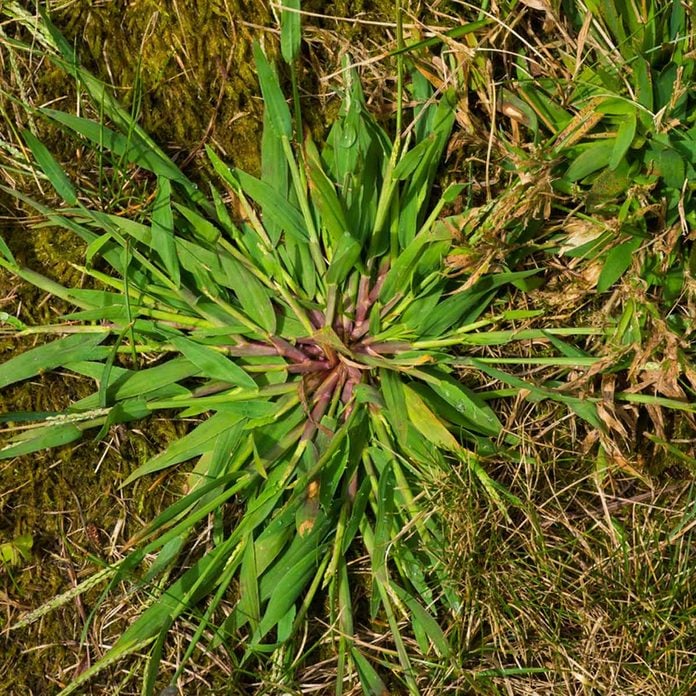 Christian Delbert/Shutterstock
Christian Delbert/Shutterstock
Crabgrass
Crabgrass (Digitaria spp.) is another invasive plant that's easy to remove by hand. Trouble is, if it gets established in your lawn, that could mean a lot of hand-weeding. Crabgrass is most noticeable in the heat of summer, as it remains green and vibrant-looking even in drought. Unfortunately, that just makes a drought-stressed lawn look worse. You can treat with a pre-emergent herbicide in spring, or spot-treat with a nonselective herbicide during the growing season, being careful not to hurt surrounding grass. Always apply on a calm day.
Don't like chemicals? Here are some natural ways to get rid of weeds.
7 / 10
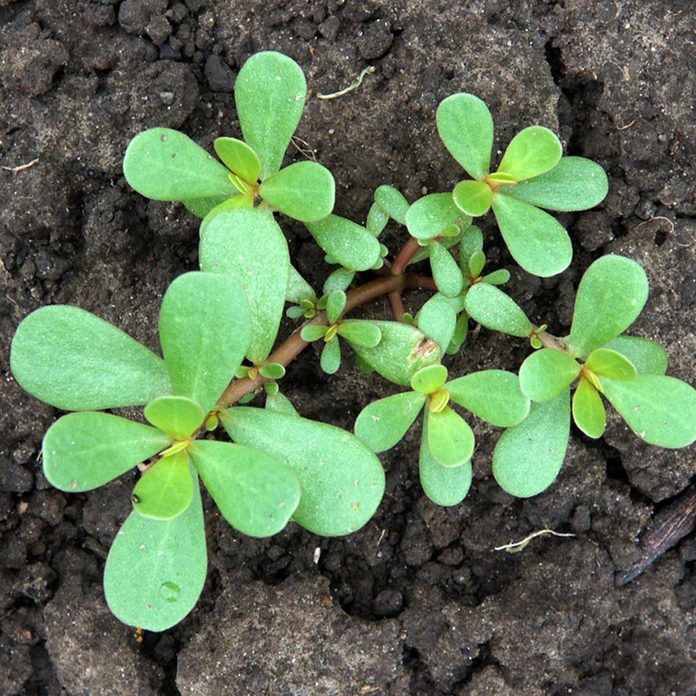 Volodymyr Nikitenko/Shutterstock
Volodymyr Nikitenko/Shutterstock
Common Purslane
Common purslane (Portulaca oleracia) is a broadleaf annual with fleshy, succulent leaves that give it extra protection in hot, sunny conditions. Common purslane sneers at dry weather, so it does what nature intended it to do: cover bare earth needing protection. Unlike its ornamental cousin, common purslane's flowers are too small to make much impact, so gardeners are quick to remove it. You can hand-pull plants or keep beds mulched. In the lawn, treat with a pre-emergent herbicide in spring or a broadleaf herbicide during the growing season. Check out these 10 drought-tolerant landscaping ideas.
8 / 10
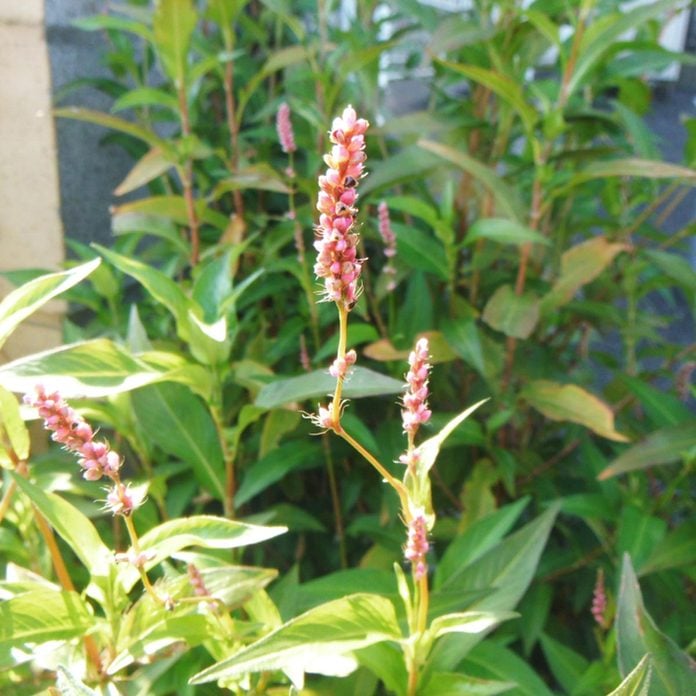 oshihuKirienko/Shutterstock
oshihuKirienko/Shutterstock
Smartweed
Smartweed (Polygonum spp.) grows more than three feet tall so it's not apt to be overlooked in the garden. The modest pink or white flowers are not showy enough to warrant a place in most gardens, so remove by hand or treat with a post-emergent herbicide. One thing to note: smartweed does have wildlife value — songbirds eat its seeds.
9 / 10
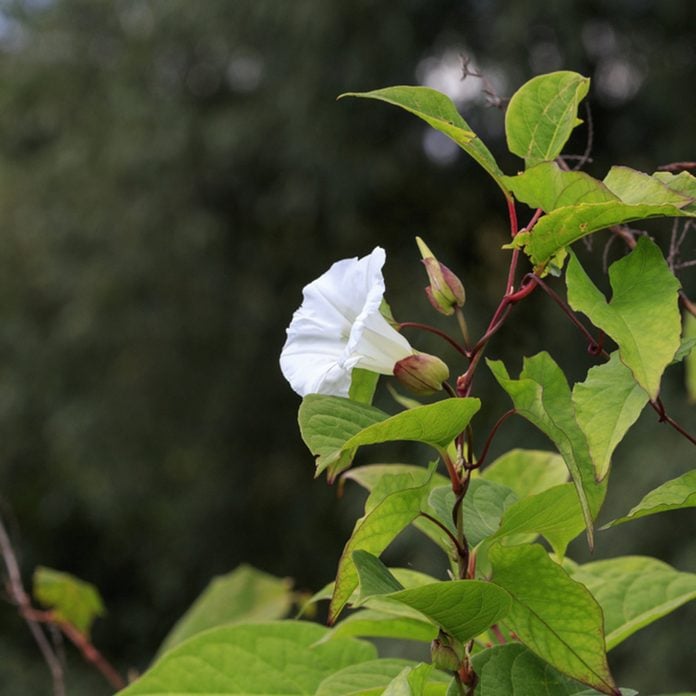 Bildagentur Zoonar GmbH/Shutterstock
Bildagentur Zoonar GmbH/Shutterstock
Field Bindweed
The weedy relative of morning glory, field bindweed (Convolvulus arvensis) is a climbing or creeping perennial that reproduces through seeds and roots. Seeds can remain viable in the soil for 20 years. And even a small fragment of root can result in a new plant, so hand-pulling is not an option for these invasive plants unless you do it repeatedly until the remaining roots use up their reserves. Treat existing plants with a post-emergent herbicide. Prevent seeds from germinating with a mulch or a pre-emergent herbicide. Plant one of these colorful flowers instead to brighten up your landscape.
10 / 10
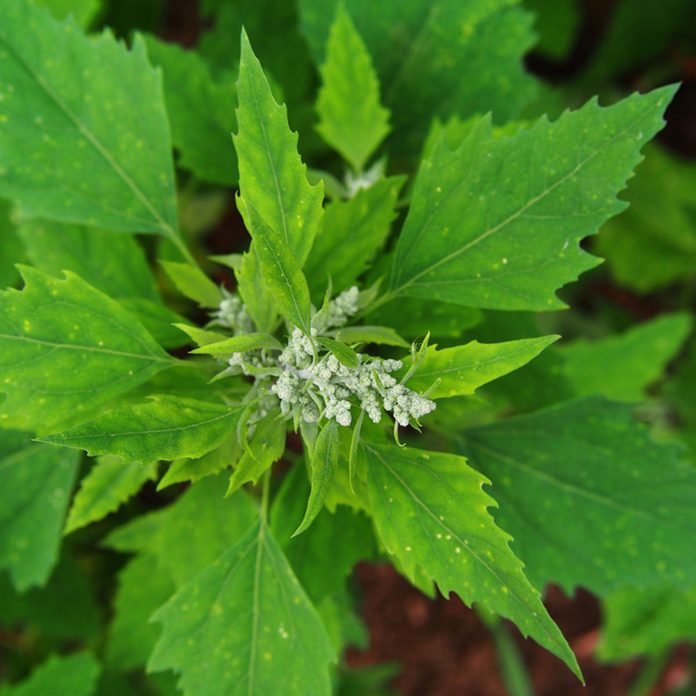 Anna Gratys/Shutterstock
Anna Gratys/Shutterstock
Lamb's Quarters
Young lamb's quarters leaves are sometimes added to salads or soups, so a chef might object to the word "weed." However, there is little ornamental value to these plants, so those with strictly ornamental gardens need not put up with them. Lamb's quarters (Chenopodium album) are exceedingly easy to remove by hand when young. Just grasp the stem close to the ground and pull upwards. If you wait until they're four feet tall, however, a shovel may be needed.
Go ahead and invest in a new tree for your backyard. You won't be sorry.
Originally Published: May 21, 2020
Sign up for DIY projects sent right to your inbox
Complete DIY projects like a pro! Sign up for our newsletter!

Subscribe & SAVE 1 Year Subscription
for only $10!
How To Kill Invasive Plants In The Garden?trackid=sp-006
Source: https://www.familyhandyman.com/list/10-invasive-plants-you-should-get-out-of-your-garden-now/
Posted by: watersthermse.blogspot.com

0 Response to "How To Kill Invasive Plants In The Garden?trackid=sp-006"
Post a Comment